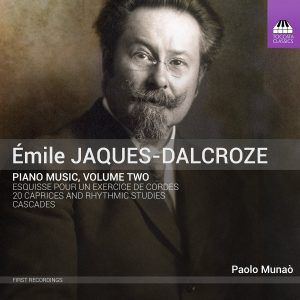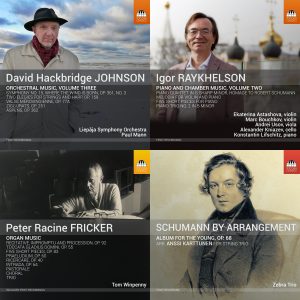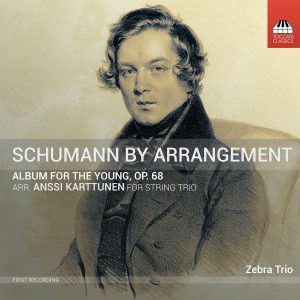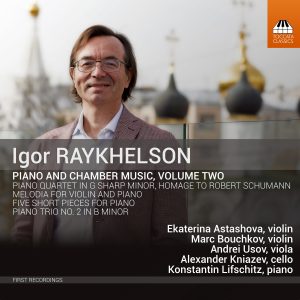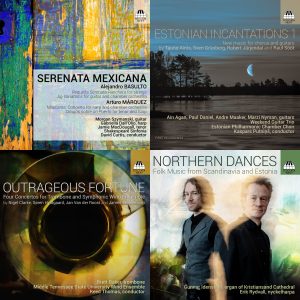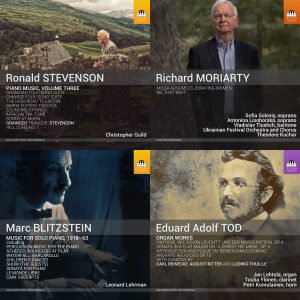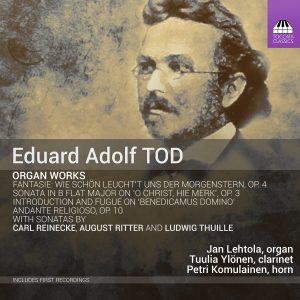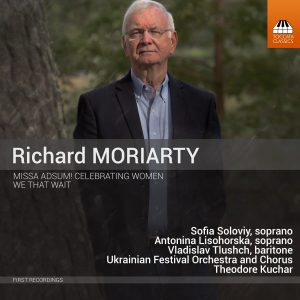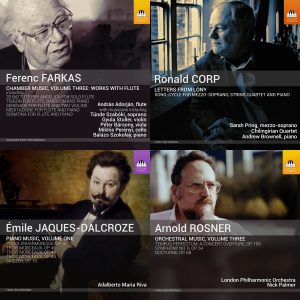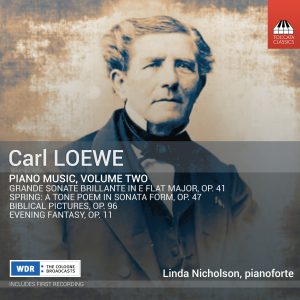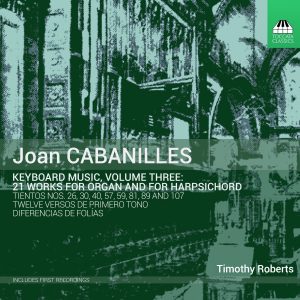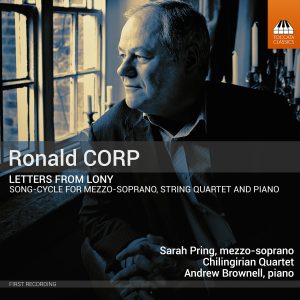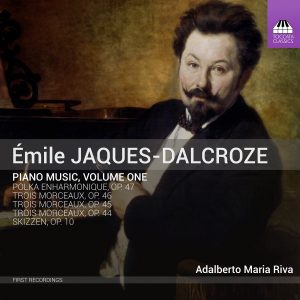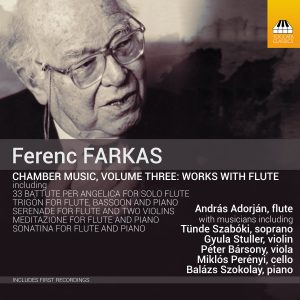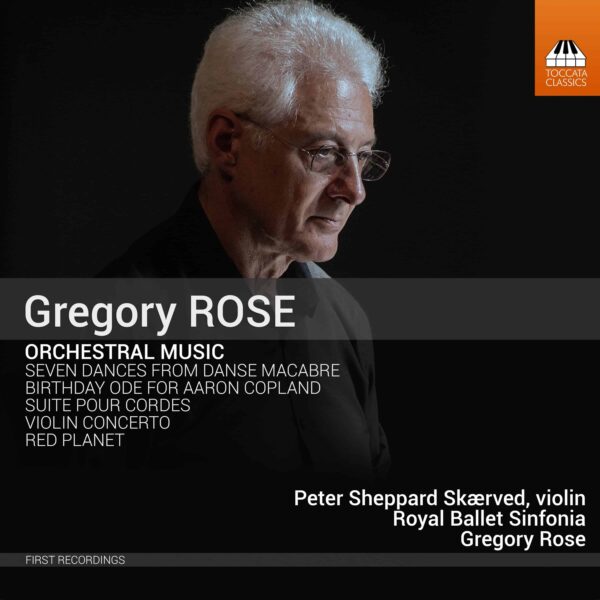Search Results for "Space Wolf: The First Omnibus mp3 torrent" – Page 56
Émile Jaques-Dalcroze Piano Music, Volume Two
The Swiss composer Émile Jaques-Dalcroze (1865–1950) is best remembered for his development of Eurhythmics, which teaches the appreciation of music through movement. But Jaques-Dalcroze, who studied with Delibes and Fauré in Paris and with Bruckner and Fuchs in Vienna, was a considerable composer in his own right, with operas, cantatas and orchestral works among his substantial output. His 20 Caprices and Rhythmic Studies constitute an important but hitherto unknown set of character-studies, combining a relaxed lyricism with technical challenges of considerable subtlety for the player.
Notes en Français
Paolo Munaò, piano
April 2019 Bundle
Included in this bundle:
Schumann by Arrangement
Album for the Young, Op. 68. transcr. string trio by Anssi Karttunen
Schumann’s ‘Album fur das Jugend,’ Op. 68, of 1848 appears to be a collection of simple teaching pieces for children. But its unassuming exterior hides a wealth of interconnected references: to Bach and to William Blake (whose ‘Songs of Innocence and Experience’ it shadows), and to the life of the Romantic artist as reflected in nature and the passage of the seasons. Anssi Karttunen’s transcription for string trio brings a textural subtlety that enhances the unsuspected layers of meaning in Schumann’s modest miniatures. The Zebra Trio consists of the Austrian violinist Ernst Kovacic, Canadian violist Steven Dann and Finnish cellist Anssi Karttunen, each bringing a vast experience in chamber music, in different styles and in working with living composers to the world of the string trio. The Zebra Trio has always mixed familiar masterpieces with new works and transcriptions, combining all of these in creative ways in their concerts.
Zebra Trio
Igor Raykhelson: Piano & Chamber Music, Vol. 2
In his early days the composer-pianist Igor Raykhelson – born in Leningrad in 1961, once a New York resident and now based in Moscow – studied both classical and jazz piano. Both influences have combined to create a uniquely personal, Rachmaninov-plays-the-Blues Neo-Romantic style: not only is Raykelson unafraid to write a good tune- it’s clear right away whose tune it is. And in his chamber and instrumental works, the parlando manner that Raykhelson absorbed from jazz becomes particularly effective. Raykhelson’s chamber music is usually written for his friends, and here he is joined by some of Russia’s finest musicians, including the cellist Alexander Kniazev and the pianist Konstantin Lifschitz- and the violinist in Raykhelson’s lyrical ‘Melodia’ is his wife, Ekaterina Astashova.
Ekaterina Astashova, violin
Marc Bouchkov, violin
Andrei Usov, viola
Alexander Kniazev, cello
Konstantin Lifschitz, piano
March 2019 Bundle
Included in this bundle:
Toccata Next Launch Bundle
Included in this bundle:
February 2019 Bundle
Included in this bundle:
Eduard Adolf Tod: Organ Works
In his short life (1839–72) Eduard Adolf Tod garnered a reputation as one of the finest organists of the day: Liszt praised his playing, and he gave a recital in the Royal Albert Hall in the very year of its opening. Most of Tod’s handful of works for the organ – solo and as a duo partner – have not been recorded before; here they are joined by three other little-known German organ sonatas to give an overview of the genre as it evolved from its well-behaved Mendelssohnian origins into late-Romantic grandeur.
Jan Lehtola, organ of St John’s Church, Helsinki
Tuulia Ylönen, clarinet (Track 7)
Petri Komulainen, horn (Track 13)
Richard Moriarty: Missa Adsum! Celebrating Women; We That Wait
The American composer Richard Moriarty (born in Boston in 1946) spent his professional life as a pathologist, taking up composition upon his retirement, as a student of Adolphus Hailstork and Richard Danielpour. His deeply felt orchestral song-cycle We That Wait, using poems from the American Civil War written by women, and the expansive, exuberant Missa Adsum! Celebrating Women are both grand statements in a proud American tradition of Neo-Romanticism – accessible, direct and sincere.
Sofia Soloviy, soprano (Tracks 1–7)
Antonina Lisohorska, soprano (Tracks 8–16)
Vladislav Tlushch, baritone (Tracks 9–11, 14–16)
Ukrainian Festival Chorus (Tracks 8–16)
(Iryna Kyselchuk, director)
Ukrainian Festival Orchestra
(Marko Komonko, leader)
Theodore Kuchar, conductor
Ronald Stevenson: Piano Music, Volume Three
The Scottish composer Ronald Stevenson (1928–2015) was a virtuoso concert pianist in the tradition of Beethoven, Liszt and Rachmaninov but, like his friend Percy Grainger, he was also fascinated by the folk musics of the world. This third album of his piano music juxtaposes his arrangements of Celtic – Breton, Cornish, Irish, Manx, Scots and Welsh – folk-songs and dances with his Chinese and Ghanaian Folk-Song Suites and his resourceful transcription of Grainger’s visionary Hill Song No. 1 for wind band, here realised as an expansive tone-poem for the piano.
Christopher Guild, piano
January 2019 Bundle
Included in this bundle:
Carl LOEWE: Piano Music, Volume Two
Known in his lifetime as ‘the north German Schubert’, Carl Loewe (1796–1869) is remembered today chiefly as a composer of ballads. Yet there is a considerable body of piano music that is strikingly innovative in content, expression and harmony, containing the germs of ideas later taken up by composers such as Wagner and Liszt. Loewe was unquestionably a brilliantly original talent, a major figure in ushering in the Romantic era.
Linda Nicholson, piano Erard, Paris, c. 1839
Joan CABANILLES: Keyboard Music, Volume Three
Much of the music of Joan (or Juan) Cabanilles (1644–1712) is as virtuosic and colourfully Baroque as that of his northern contemporary, Dietrich Buxtehude, though it is also touched with a distinctively Spanish intensity. He is claimed as the most prolific of all composers for the organ, and publication of his works, begun in 1927, is still under way. This is the third in an ongoing series of recordings designed to restore a great Valencian master to his unique glory.
Timothy Roberts
organ of the Church of Sant Jaume, Vila-real, Valencia (1–17)
harpsichord in seventeenth-century Flemish style by Michael Johnson (18-19)
anonymous seventeenth-century organ of the Parish Church, Banyalbufar, Mallorca (20 – 21)
Ronald Corp: Letters from Lony
Letters from Lony tells the story of Leonie (‘Lony’) Rabl in her own words. A German-Jewish exile from Nazism, she ran the Café de Paris in Amsterdam, writing when she could to her daughter and family, safe in England; two further letters survive from after her deportation, on the journey that took her via Theresienstadt to Auschwitz. Ronald Corp sets Lony’s letters as accompanied arioso, all the more moving for its understatement.
Sarah Pring, mezzo-soprano
Chilingirian Quartet
Levon Chilingirian, violin
Ronald Birks, violin
Susie Mészáros, viola
Stephen Orton, cello
Andrew Brownell, piano
Émile Jaques-Dalcroze: Piano Music, Volume One
The Swiss composer Émile Jaques-Dalcroze (1865–1950) is best remembered for his development of Eurhythmics, which teaches the appreciation of music through movement. But Jaques-Dalcroze, who studied with Delibes and Fauré in Paris and with Bruckner and Fuchs in Vienna, was a composer of considerable stature in his own right, with operas, cantatas and orchestral works among his substantial output. These piano works, all written in the 1890s, are generally lighter in style, showing the influence of Schumann and the salons of Paris.
Adalberto Maria Riva, piano
Ferenc Farkas: Chamber Music, Volume Three – Works with Flute
This tenth release in the Toccata Classics exploration of the music of Ferenc Farkas (1905–2000) puts his chamber music with flute in the spotlight. As with previous albums in this series, the music here highlights the characteristics that make Farkas’ music so appealing: catchy tunes, transparent textures, buoyant rhythms, a fondness for Baroque forms and a taste for the folk-music of his native Hungary that marks him out as a true successor to Bartók and Kodály. Some of these pieces speak a tougher language that shows Farkas to have been in touch with his times, but it is the infectious melodic appeal of most of the music here that carries the day.
András Adorján, flute
Tünde Szabóki,soprano (Tracks 9–10, 15–17, 25–27)
Lajos Rozman, clarinet (Tracks 11 – 13)
Andrea Horváth, bassoon (Tracks 11–13, 33–35)
Gergely Kovács, horn (Tracks 28 – 30)
Gyula Stuller, violin (Tracks 4 – 8, 19 – 24)
Márta Abrahám, violin (Tracks 4 – 8)
Péter Bársony, viola (Tracks 15–17, 25–30)
Miklós Perényi, cello (Tracks 15 – 17, 19 – 24)
András Csáki, guitar (Tracks 25 – 27, 31 – 32)
Balázs Szokolay, piano (Tracks 1 – 3, 33 – 35)
Your Basket
Stay In the Know
JOIN THE TOCCATA NEWSLETTER
"*" indicates required fields
By visiting our site, you agree to our privacy policy regarding cookies, tracking statistics, etc.
